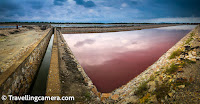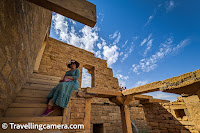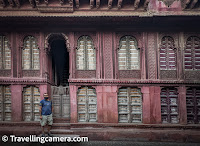Gatore ki Chhatriyan, also known simply as Gatore, is a complex of royal cenotaphs located at the foothills of the Nahargarh Fort in Jaipur, Rajasthan. This site serves as the final resting place for the kings of the Kachwaha Rajput dynasty and is renowned for its stunning architecture and intricate carvings that showcase the artistry of Rajasthan. Nestled away from the city's hustle and bustle, Gatore ki Chhatriyan is often described as a hidden gem, offering a serene and peaceful atmosphere that makes it a must-visit destination in Jaipur.
Historical Background
The Gatore cenotaphs were established in the early 18th century by Maharaja Sawai Jai Singh II, the founder of Jaipur. This location was chosen as the official cremation ground for the royal family of Jaipur, and over time, it became the resting place of many Maharajas and their close relatives. The word "Gatore" is believed to be a mispronunciation of the Hindi phrase "Gaya ka Thor," which means "the resting place of the departed souls."
Architectural Marvel
The architecture of Gatore ki Chhatriyan is a stunning blend of Rajput and Mughal styles, with each cenotaph (locally called chhatri) uniquely designed to reflect the personality and achievements of the Maharaja it commemorates. The cenotaphs are built using white marble and sandstone, adorned with intricate carvings that depict traditional Rajasthani motifs, floral patterns, and mythological figures.
Key Architectural Features:
Chhatris (Cenotaphs): The cenotaphs are designed in the form of chhatris, which are dome-shaped pavilions commonly used in Rajput architecture to honor the memory of the deceased. Each chhatri at Gatore is distinct, reflecting the individual traits and the legacy of the ruler it represents.
Intricate Carvings: The marble structures are adorned with detailed carvings that showcase scenes from Hindu mythology, local folklore, and elements of Rajput culture. The craftsmanship seen in these carvings highlights the skills of the artisans who were involved in the construction of these chhatris.
Elephant Motifs and Pillars: Many of the cenotaphs feature ornate elephant sculptures and intricately designed pillars that symbolize strength and royalty. These decorative elements not only enhance the beauty of the site but also signify the power and grandeur of the Kachwaha dynasty.
Main Cenotaph of Maharaja Sawai Jai Singh II: The cenotaph dedicated to Maharaja Sawai Jai Singh II is one of the most elaborate structures in the complex. It stands out for its fine marble work and detailed carvings, which reflect the Maharaja's significant contributions to the development of Jaipur.
Significance and Symbolism
Gatore ki Chhatriyan is more than just a burial ground; it is a place that encapsulates the history, culture, and traditions of the royal family of Jaipur. The cenotaphs not only honor the memory of the rulers but also serve as a testament to their achievements and their role in shaping the history of Jaipur. The symbolism embedded in the carvings and architectural designs of the chhatris tells stories of bravery, valor, and the rich cultural heritage of Rajasthan.
Legends and Myths
According to local legends, the site of Gatore ki Chhatriyan is considered sacred and is believed to have been blessed by the gods. It is said that the cenotaphs protect the souls of the departed Maharajas, ensuring that their spirits remain at peace. There are also stories of secret tunnels that supposedly connect Gatore to the nearby Nahargarh Fort, which were used by the royals during times of war or emergency.
Visiting Gatore ki Chhatriyan
Gatore ki Chhatriyan is not as crowded as other tourist attractions in Jaipur, making it a perfect spot for visitors who want to explore the city's heritage in a tranquil setting. The peaceful ambiance and the serene surroundings provide a stark contrast to the bustling streets of Jaipur.
Practical Information for Visitors:
Location: Gatore ki Chhatriyan is situated about 15 kilometers from the city center of Jaipur, near the foothills of Nahargarh Fort.
Opening Hours: The site is open to visitors from 10:00 AM to 5:00 PM every day.
Entry Fees: There is a nominal entry fee for both Indian and international tourists.
Best Time to Visit: The best time to visit Gatore ki Chhatriyan is during the cooler months, from October to March, when the weather is pleasant and ideal for exploring the outdoor monuments.
Nearby Attractions
While visiting Gatore ki Chhatriyan, you can also explore several nearby attractions that offer a glimpse into Jaipur’s royal history:
Nahargarh Fort: Located on the Aravalli hills, this fort offers stunning views of Jaipur and is known for its impressive architecture and rich history.
Jaigarh Fort: Known as the "Fort of Victory," Jaigarh Fort is famous for its massive cannon called Jaivana and its extensive fortification.
City Palace: A majestic complex in the heart of Jaipur that showcases a blend of Rajasthani and Mughal architecture.
Conservation and Restoration Efforts
Efforts to preserve and restore the Gatore cenotaphs have been ongoing to ensure that the beauty and historical significance of this site are maintained for future generations. Local authorities, along with heritage conservation groups, are working to repair damages caused by weathering and neglect over the years.
Gatore ki Chhatriyan is a hidden gem in Jaipur that beautifully captures the essence of Rajasthan’s royal legacy. Its intricate architecture, rich symbolism, and peaceful setting make it a unique destination for those who wish to delve deeper into the history and culture of Jaipur. Whether you are a history enthusiast, an architecture lover, or a traveler looking to explore Jaipur’s hidden treasures, Gatore ki Chhatriyan promises an experience that is both enriching and memorable.
Related Blogposts:
 Amber Fort in Rajasthan : The Pearl of Jaipur's Rajput Architecture
Amber Fort in Rajasthan : The Pearl of Jaipur's Rajput Architecture
 Chand Baori in Abhaneri: A Marvel of Ancient Indian Architecture in Rajasthan
Chand Baori in Abhaneri: A Marvel of Ancient Indian Architecture in Rajasthan
 Bhandarej Baori: An Ancient Stepwell of Rajasthan's Heritage
Bhandarej Baori: An Ancient Stepwell of Rajasthan's Heritage
.jpg) Tour de Churu Streets having grand havelis with marvelous fresco paintings | Haveli Heritage Tour Rajasthan, India
Tour de Churu Streets having grand havelis with marvelous fresco paintings | Haveli Heritage Tour Rajasthan, India
 Beautiful Vyas Chhatris in Jaisalmer, Rajasthan || the most unusual sunset point built in a cremation ground
Beautiful Vyas Chhatris in Jaisalmer, Rajasthan || the most unusual sunset point built in a cremation ground
 Magnificent Cenotaphs at the Bada Bagh, Jaisalmer, Rajasthan || Exorbitant Ticket Prices can be a deterrent to anyone visiting the place
Magnificent Cenotaphs at the Bada Bagh, Jaisalmer, Rajasthan || Exorbitant Ticket Prices can be a deterrent to anyone visiting the place
 An interesting drive from Kuldhara to Khaba Fort, Dedha, Jaisalmer, Rajasthan || The Journey was definitely worth the visit to this beautiful little fort
An interesting drive from Kuldhara to Khaba Fort, Dedha, Jaisalmer, Rajasthan || The Journey was definitely worth the visit to this beautiful little fort
 A half day detour to Sambhar Salt Lake, Rajasthan from NH48 || What makes India's Largest Inland Salt Lake worth visiting in winters?
A half day detour to Sambhar Salt Lake, Rajasthan from NH48 || What makes India's Largest Inland Salt Lake worth visiting in winters?
 A fulfilling stop at Mandore in Jodhpur, Rajasthan || The old seat of the Rathore clan and also the birthplace of Mandodari
A fulfilling stop at Mandore in Jodhpur, Rajasthan || The old seat of the Rathore clan and also the birthplace of Mandodari
 The Golden Fort of Jaisalmer, Rajasthan || A thriving, pulsating mini city within the walls of the fort
The Golden Fort of Jaisalmer, Rajasthan || A thriving, pulsating mini city within the walls of the fort
 The splendid architecture of Patwon ki Haveli in Jaisalmer, Rajasthan || One of the most opulent of the havelis in Jaisalmer
The splendid architecture of Patwon ki Haveli in Jaisalmer, Rajasthan || One of the most opulent of the havelis in Jaisalmer
 The Abandoned Village of Kuldhara near Jaisalmer, Rajasthan || Facts and Fables about why the Paliwal Brahmins abandoned this village of their ancestors
The Abandoned Village of Kuldhara near Jaisalmer, Rajasthan || Facts and Fables about why the Paliwal Brahmins abandoned this village of their ancestors
 The Amazing Pokaran Fort near Jaisalmer, Rajasthan || A beautiful structure that effortlessly blends with the desert landscape it is built in
The Amazing Pokaran Fort near Jaisalmer, Rajasthan || A beautiful structure that effortlessly blends with the desert landscape it is built in
 Vedi Temple inside KumbalGarh Fort, Rajasthan - 3 Storey Octagonal structure standing strong on 36 pillars around world's second largest wall
Vedi Temple inside KumbalGarh Fort, Rajasthan - 3 Storey Octagonal structure standing strong on 36 pillars around world's second largest wall












.jpg)
















.jpg)

.jpg)
Comments